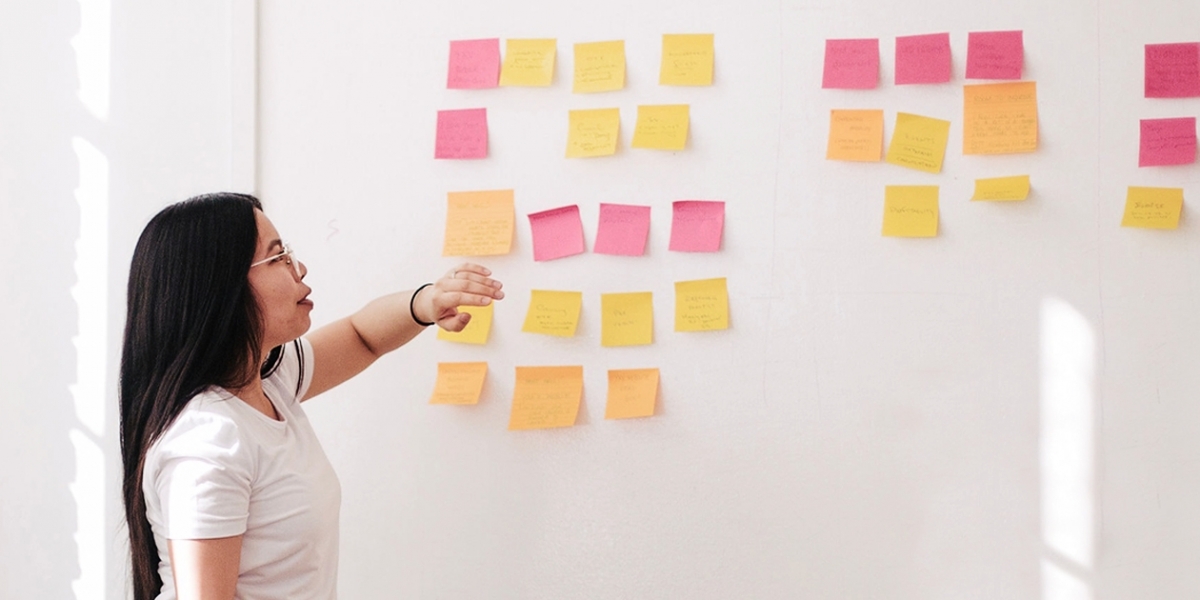Donor personas are a critical building block of any effective nonprofit communications and marketing plan.
If you have never created a donor persona or constituent persona before, we have put this post together as an easy guide that will walk you through the process step-by-step.
Personas are important for your nonprofit communications work because personas are a semi-fictional representation of your ideal supporter. By creating personas it makes developing messaging and engagement strategies easier.
Personas allow you to focus in on key motivations for different types of real people that your organization engages with.
For instance, some donors may be interested in understanding the data about the quantitative impact your organization is having, while other donors may be interested in the qualitative human success stories that come our of your work.
Both are valid motivations, however, as a nonprofit professional, you will need to figure out how to generate content, talking points, fundraising materials and key messaging that captures the hearts and minds of both. This post will show you how!
Here’s what we will be reviewing in this article:
- What Are Personas?
- What Are Engagement Journeys
- Tools for Getting Started
- The 4-Step Process to Building Personas
- Validate Your Personas with Stakeholder Interviews & Surveys
- How to Create Messaging Using Personas
What Are Personas?
If you’re not sure what a persona is, think of it as a semi-fictional character that represents the motivations related to your ideal customer, donor, or supporter.
Rather than trying to address everyone, we’re instead focusing on individualized representatives of our target audiences. This helps us understand what motivations they have, where we can find them, and what tools we might need to be successful in contacting them.
Personas allow us to develop our key messaging and structure our marketing campaign more accurately.
What Are Engagement Journeys?
Engagement journeys are all of the different points of contact a persona has with your organization, taking them from being unaware of your work to becoming a loyal advocate. This helps us better understand how to create campaigns and identify the types of goals that each campaign should have.
For example, if you want to build a donor acquisition campaign, you’ll want to start to consider where do we find our donors (ex. events, social media, associations, etc.). You’ll also want to understand why your work is particularly interesting to your target donors. What content, marketing materials and calls to action will work best for them?
On the other hand, if you’re building a campaign to engage your existing donors in a recurring giving program, you may be considering completely different elements.
For example, which of our donors are the best fit for this campaign? What has motivated those donors to give in the past? How to structure the campaign. Is it an event, mail piece, social media campaign, etc.
In short, not all messages and approaches are the right approach for all donors. Some are more likely to take action as a result of your campaign based on what motivates them most.
Tools for Getting Started
When we go through this exercise with our nonprofit partners and clients, we use a set of tools that helps record all of the data and organization the information. These worksheets come in a few different formats for your convenience.
Through the rest of this article, we will be referring to these worksheets and walking you through how to use them.
Get instant access to our persona development tools here.
- Persona Worksheet (PDF Version) – Choose this option if you prefer to work with pen and paper.
- Persona Worksheet (Google Sheets Version) – Choose this option if you prefer to work digitally, using Google Sheets.
- Persona Worksheet (Excel Version) – Choose this option if you prefer to work digitally, using Excel.
The 4-Step Process
Remember when we mentioned there being a better way?
This is how the process breaks down:
- Notice and reflect upon your mindset.
- Identify your audiences.
- Group those audiences by motivation.
- Define your personas and the goals you have for them.
- Map out a persona engagement journey.
Step 1: Notice & Reflect
The first step when beginning this work is to notice and reflect. We use the Liberatory Design process and its mindset cards created by the Stanford d.school and The National Equity Project to help us practice better self-awareness of our own identities, values, emotions, biases, assumptions and situatedness. We highly recommend reading through the full card deck before beginning this work.
Step 2: Identifying Audiences
The second step is to identify all of the audiences your organization interacts with on a regular basis—and by audiences, we mean real people. These can be donors, partners, clients, service recipients, volunteers, internal staff, foundation managers, the press, etc.
Most important: write down real people that you interact with (directly or indirectly) during this step in the process. Literally write their names into the first column. We find beginning with categories and then naming 3-5 people in each category, helps break it down so you don’t miss anyone. During this process, it is helpful to also reflect upon the Design Justice Network’s principles, you may have never considered yourself a designer before, but working through this process, certainly makes you one now.
If you’re using one of our worksheets, you’ll see several questions regarding your audiences. Of these, it’s most important that you answer “What do they care about?” because it will be important later in the process. We find that it helps to break it down into two trains of thought:
- Why are they coming to your organization? Is there a particular topic, or a particular sector, that your organization works within that this individual cares about?
- What do they want from you? Do they want to feel like they’re part of a community? Do they see you as a leader in the field? Do they want additional learning opportunities?
Step 3: Grouping Audiences
Now that you’ve established your audiences, the next step is to start grouping them based on behavior patterns, common motivations or pain points, or shared goals and outcomes.
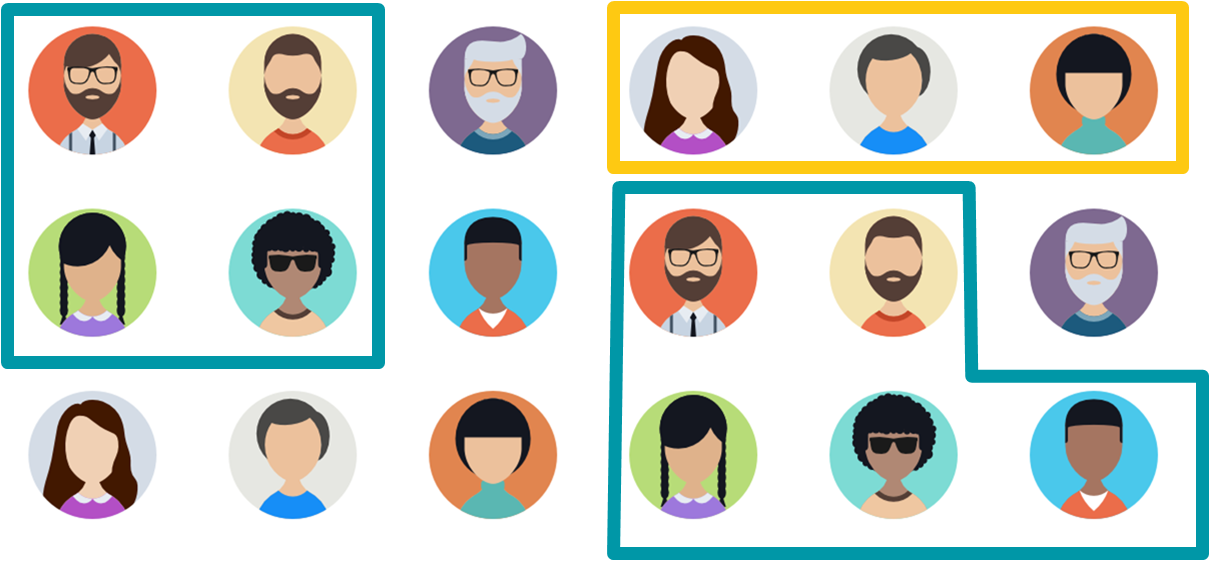
IMPORTANT Diversity, Equity and Inclusion Gut Check: As we start building grouping our audiences, it’s important to take a moment to revisit the Liberatory Design Mindset cards and recognize any identity-related patterns and inequities we might be perpetuating unintentionally, or other areas of biases and privilege that could impact this step. We have to be careful about the ways we group people, because will reflect within how we communicate. It may help to ask questions, like:
- Have people been historically underrepresented or marginalized?
- Note how language like “underrepresented” versus “underserved,” in itself, illustrates a power dynamic.
- Whose voices and priorities are we centering? Are we only focusing on donors needs and not our clients or partners?
- Are there power dynamics shaping our responses?
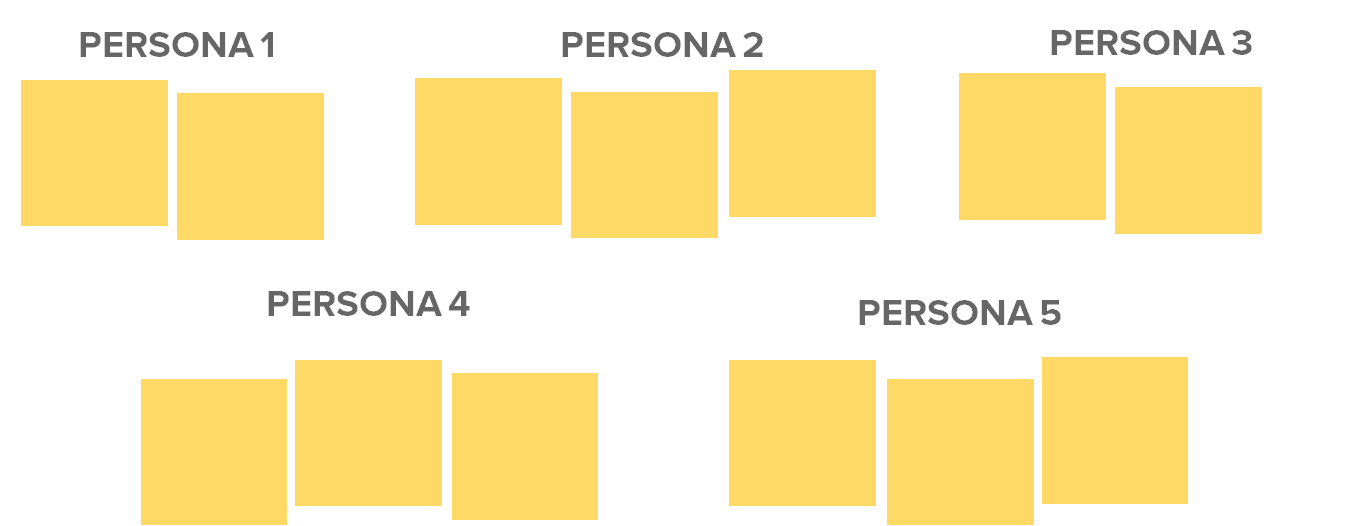
Most organizations have three to five personas. If you find yourself with more than five, you may want to reconsider how you want to group your audiences.
For now, shoot for three or four.
Remember, “What do they care about?” What is the vision of the world that they want to see, and how can you help them get there?
Here are some common motivations and how they can be engaged:
- Compassion
- Finding Community
- Statistical Impact
- Broad Systems Change
- Prestige and Status
- Improve Economic Opportunity
- Children/Family
- Better Health
- Political Outcomes
- Strengthen Community Fabric
- Stability
Once you’ve grouped and sorted your audiences into personas, it’s time to name them. It’s up to you whether you give them an actual name or a more categorical designation, like “Community Connector”.
Step 4: Defining Personas
Now we’re going to add more detail to our personas. This will help us understand them better and, in turn, improve our communications strategy and campaign marketing.
Examples of Common Personas – This is a list of common personas that we see working with our clients. Note that while these may not apply to your specific organization, they may still prove helpful.
For example:
- By defining our persona’s motivations, we can craft better messaging.
- By defining our persona’s habits, we can reach them where we know they are.
- By defining our persona’s personal situation, we can better understand what challenges we might have in capturing their attention and how we might overcome them.
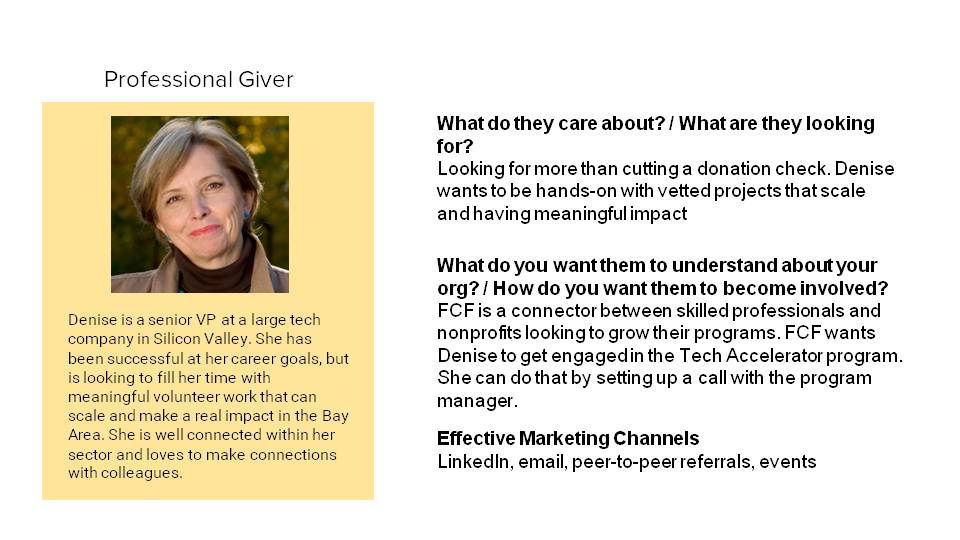
Here is an example of a persona from our partner, Full Circle Fund. There are four things we want to know about this particular individual:
- What are they looking for from our organization? (A.k.a. “What do they care about?”)
- What do we want them to know about our organization, in order to get involved?
- What actions do they need to take, in order to take that first step to get involved with us?
- What are the best marketing channels, in order to find/reach them?
If you’re working with our PDF version of the worksheet, this should look pretty familiar. We’ve gone ahead and filled ours out, with our example persona in mind.
If you’re using the online version, you’ll see our answers in row 2 to give you a starting point. Now is a great time to take at least twenty minutes and concentrate on your first persona. Start with just one and make sure you’re thorough when defining who that persona is, what motivates them, and how you might be able to contact them.
Step 5: Mapping Persona Engagement
Now that you’ve defined at least one persona, we’re going to look at how that persona engages with your mission. Remember, the engagement journey starts with a persona being totally unaware of your organization and moves all the way through being them becoming a loyal advocate of the work you do.
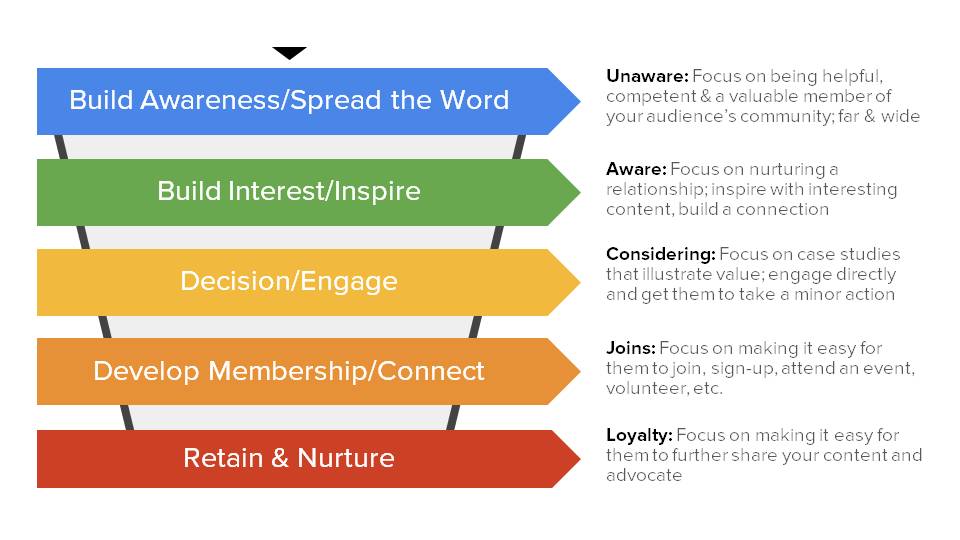
By understanding this journey, we can:
- Better segment, based on where an individual is in the engagement journey.
- Determine the type of messaging we need to develop at each stage to move them forward.
- Identify milestones, helping us to build better marketing campaigns.
- Develop a blueprint for how we manage our relationships with these particular individuals.
Unfortunately, while our goal is to make everyone a loyal supporter, that doesn’t always happen. Sometimes we end up with fewer people than we started with. For this reason, many refer to the journey as an engagement funnel—though, the term “funnel” can be a bit of a misnomer.
Say you want to ask a longtime donor to join your board. Clearly, they’re already aware of your organization and have committed to donating on a regular basis, but the process of asking them to join as a board member will take them back through the building interest and decision-making processes. In those cases, it’s more like an engagement cycle.
Either way, it’s time to tackle yours.
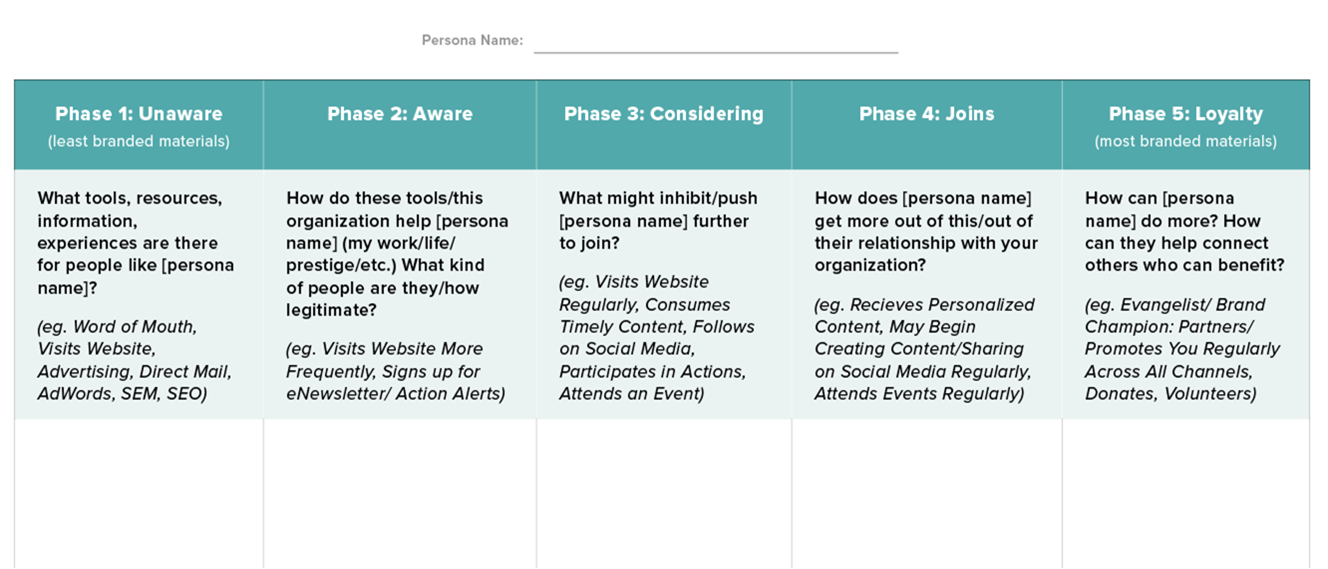
If you’re using our PDF worksheet, you’ll see that each column represents a stage in the engagement process: Unaware, Aware, Considering, Joins, and Loyalty. For each of these stages, think about what tools, information, resources, experiences, etc. that particular persona needs to move on.
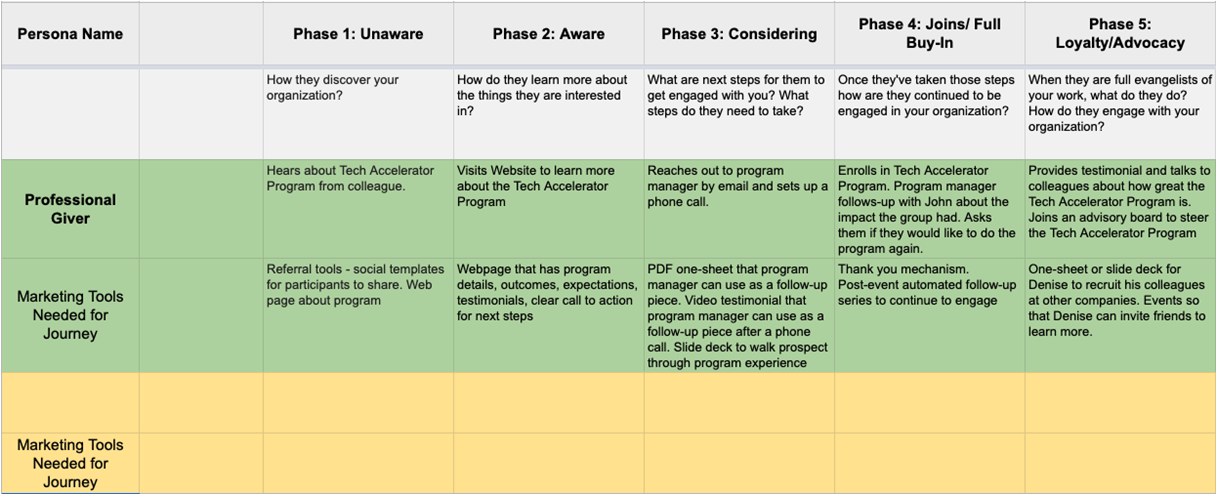
If you’re using the online version, you’ll see there are two rows in the worksheet for each persona. The first row is to further define a given persona. The second is for you to list the particular marketing tools that might be needed to move that persona through to the next stage of the journey.
After you’ve completed this process for one persona, go back through the rest of your personas to develop a detailed outline of who they are and an engagement journey map for each of them.
How to Validate Your Personas
At this point, our work is based on mostly on lived experiences and assumptions. It’s time to validate your work with data!
Surveys and stakeholder interviews are some of the most powerful tools to validate your work. This article walks you through the process of building surveys and stakeholder interviews to validate the assumptions. Check out “Creating Donor Personas Using Stakeholder Interviews & Surveys”.
If you’re looking for a way to design and develop better stakeholder interviews, check out our full guide on stakeholder interviews.
Developing Nonprofit Impact Messaging for Your Personas
Once you have defined your personas, you have a clear understanding of their motivations. When developing messaging, we call this the persona’s “why.”
When creating targeted, segmented messaging for our personas we always start with the “why.”
We then talk about “how” we accomplish our work—what values do we uphold? How is your organization uniquely qualified to perform the work you do?
Finally, we talk about the “what.” Or, literally, the programs you do to achieve this.
Personas are a critical element in the messaging development process and the way you communicate your impact.
Developing the key messaging for your nonprofit is not easy, but luckily, we’ve created a step-by-step guide to building more powerful impact messaging based on personas.

